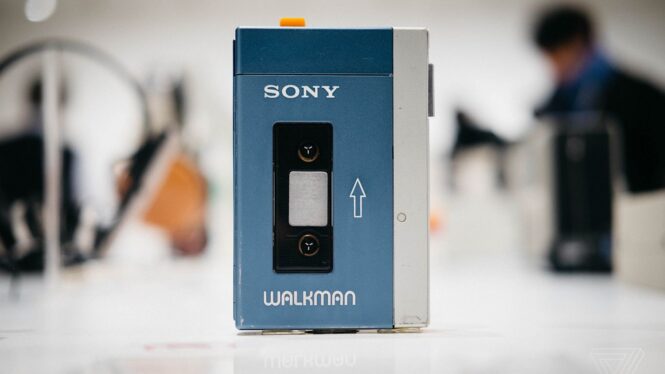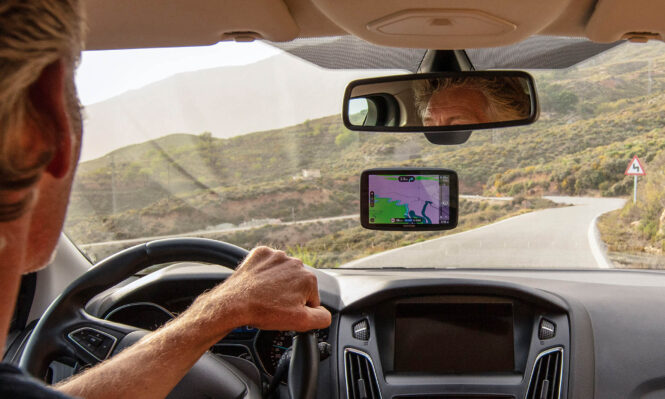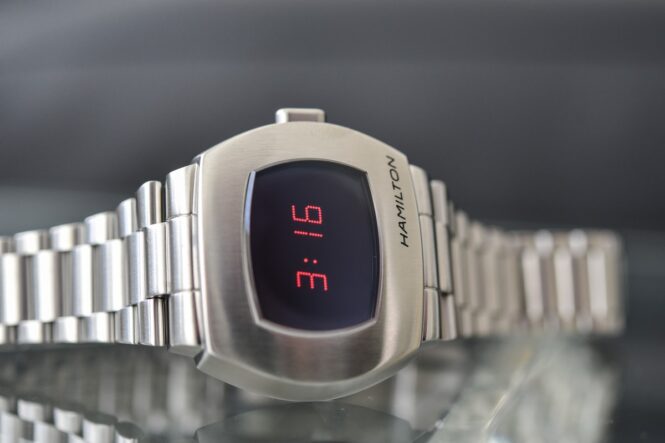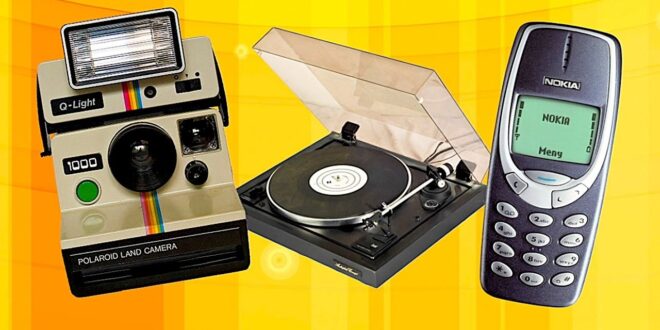Over the years, technology has been like a helpful friend to the world. It has helped us invent numerous machines which changed the world and made our lives easier.
We’ve seen many cool gadgets come and go, and some of them have evolved to make the world better even today. Let’s go back in time to learn about some of the most powerful gadgets that changed the world.
1. The Sony Walkman

Launched in 1979, the Walkman proved to be an instant hit. The first model, the Sony Walkman TPS-L2, was made from aluminum. Initially, it was sold under different names in various locations. It was known as the Freestyle in Australia but as Stowaway in the UK and the Soundabout in the USA. It eventually became popular across the world and was recognized as the Walkman globally.
A decade after its launch, Sony sold more than 100 million Walkmans globally. Within this period, over 30 new models were introduced, with improved portability and more features. The first compact cassette size Walkman, model WM-20, was launched in 1983.
In 1986, they unveiled the first models with remote control and solar battery. In 1997, the company rebranded its CD players as CD Walkman. Twenty years after the first release, the company sold more than 186 million Walkmans.
Although the original Walkman ceased production in 2010, its impact on portable music players is undeniable. Its legacy endures as it paved the way for future innovations in various forms, from dedicated MP3 players to music apps on mobile devices.
2. Smartphones
In 1992, IBM announced the very first smartphone, the Simon Personal Communicator (SPC). But it wasn’t until 1994 that it was released for sale. It was the first touchscreen mobile phone and could send and receive both faxes and emails.
The major revolution in the industry came in 2007 after Apple released the first iPhone. It was the first device that allowed users to browse the internet like on a computer. The first sets of Android devices were introduced in late 2008.
The advent of Android and iOS phones also transformed mobile gaming. The first mobile games were launched in the 1990s with the Tetris and Nokia Snake. It later evolved to Java-powered classics like Space Impact and Bounce in the early 2000s. Today, the Android and iOS operating systems have transformed smartphones into portable gaming consoles.
We now have thousands of visually appealing games, including casual favorites like Candy Crush, graphic intensive games like PUBG and Fortnite, and even casino games. Did you know, to date, one of the most played games among Aussies on smartphones is pokies and online blackjack in Australia? You’ll also find numerous mobile online casinos with different blackjack variants and other games.
The importance of smartphones in our world today cannot be overemphasized. With them, we can complete various tasks, connect with people all over the world, and entertain ourselves.
3. TomTom GPS

When the GPS (Global Positioning System) project was first invented in 1973, it was designed for the US military. It wasn’t until the 1980s that it was allowed for Civilian use. However, the version released publicly was not completely accurate. Only the US military had the most accurate data available at that time.
It wasn’t until 2000 that a bill was signed to make the system accurate for everyone. By 2001, TomTom released its first GPS car navigation system, the TomTom Navigator. The company became one of the first to introduce GPS devices for car navigation.
TomTom GO was released in 2004, becoming the first all-in-one personal navigation gadget. The company became the leading supplier of data for Apple Maps in 2018. While different mobile GPS devices are now available, TomTom GPS played a major role in revolutionizing navigation technology.
4. USB Flash Drives
Also called thumb drives, USB flash completely changed how we deal with digital files. The first USB flash drive was introduced in 1999 by M-Systems, an Israeli company. It was called DiskOnKey and released with just 8MB of storage space. At that time, it was a significant improvement over the floppy disk’s capacity.
Over time, USB drives have evolved to have over 512GB of storage, a massive increase from what it started with. These storage devices also come in various sizes and shapes. Furthermore, they now include features such as password protection, making them more secure for file storage.
Today, USB drives are still important in our world. Whether for storing family photos or sharing official documents, they provide a quick and portable way of transferring data.
5. Hamilton Pulsar

Smartwatches have come a long way from their humble beginnings. But one particular gadget that paved the way for their evolution was the Hamilton Pulsar. Launched in 1972, the Hamilton Pulsar’s case was made of gold. It was sold for $2,100, a fair price considering its worth at that time.
A cheaper version followed shortly after, though, with a stainless-steel case. This was sold for $275, making it possible for more people to experience the bliss of wearable technology.
The Hamilton Pulsar featured LED display technology, fitness tracking, and health monitoring. While it may have become old-fashioned in today’s world, we can look back and reminisce about the simplicity and elegance it brought.
6. Sony Mavica MVC-FD5
Launched in 1997, the Sonny Mavica MVC-FD5 was a game-changer for photography. Immediately after it was launched, it quickly stood out for its storage system. Unlike the traditional cameras that use film, the MVC-FD5 utilized a 3.5-inch floppy disk, making it possible to transfer photos to the computer easily. It became the first digital camera to offer such a feature.
Photographers no longer had to deal with rolls of film or wait for them to develop. They simply pop the floppy disk in the camera, snap, and share the photos. While the picture resolution was not top-notch, the MVC-FD5 focused on making digital photography easy and accessible. It only had a 0.3 MP sensor and a 2.5-inch LED, which was quite respectable then.
The MVC-FD5 was quite ugly and bulky, like other early digital cameras. Despite that, its legacy lives on. It was the beginning of something big. With better digital cameras out there now, taking photos is even simpler and more exciting. The picture qualities are also top-notch.
 Imagup General Magazine 2024
Imagup General Magazine 2024



